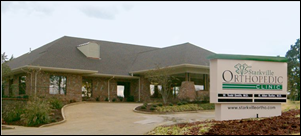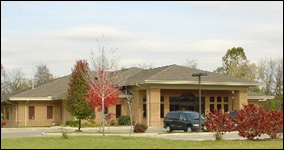The article about Pediatric Associates in CA has a nugget with a potentially outsized impact: the implication that VFC vaccines…
News 7/28/09
From Peds Guy: “Re: interview with Dr. Christoph Diasio. The piece got a lot of traffic on the AAP/SOAPM list this weekend. All the peds loved it.” Good to hear. Dr. Diasio shared how he is using technology in his pediatric practice and provided some spicy and informative commentary on CCHIT and the use of PM/EMR in general. Great read.
Starkville Orthopedics Clinic (MS) selects 7 Medical Systems to provide the 7 Ortho-on-Demand PACS for its four-provider practice.
An interactive computer questionnaire may give family doctors a better opportunity to identify and intervene with patients who are victims of domestic abuse. Researchers found that when patients were administered a multi-risk questionnaire using a touch screen computer in the waiting room, detection of domestic violence was doubled.
Blue Chip Surgical Center Partners raises $1.8 million through private equity. The company builds and manages physician-led ambulatory surgery centers in partnership with participating physicians.
I accompanied a family member to an urgent care center this weekend. The practice used EMR, so of course I was (almost) more interested in the computer than my family member’s health. The software was template driven with lots of drop-downs and nesting. Seemingly plenty of places to enter free-text as well. Observations: the medical assistant took all vitals, then manually typed everything in. It appeared the template prompted her to ask additional relevant questions about the patient’s condition. However, she only followed the template. By chance the patient mentioned this was not the first time he has had this particular ailment, which actually turned out to be a particularly vital piece of information. At the end of the visit, the patient was handed an electronically generated prescription plus an education sheet (handy). Obviously it would have been cooler if the prescription were electronically sent directly to the pharmacy but that was not the case. The biggest disappointment was that both the medical assistant and the PA who examined the patient had to turn their backs to the patient (and me) to enter data. Overall the product seemed pretty efficient, but I was left feeling as if the computer created this unnecessary barrier between the patient and provider and reduced eye contact. And, I wished the MA had not followed the template so strictly, but instead started out with a simple open-ended question like, “Tell me what is going on.” It’s clear that even the most comprehensive template does not necessarily reveal the whole story.
Interestingly, this physician seems to agree with me. An ophthalmologist shares details of his visit to an internist, who uses EMR. While the author and internist agree that the EMR provided constructive tools for monitoring physician productivity and patterns of care, the EMR also has drawbacks. At the top of the list: loss of rapport with patients because the internist was required to enter so much data. The author notes that two-thirds of the visit was devoted to data entry. The conclusion: an easy-to-read computer-generated medical record does not guarantee high quality personalized patient care.
RelayHealth signs a deal with VHA to supply its RevRunner financial clearance services.
Seems like just yesterday we were hearing projections that retail clinics would soon be available on nearly every street corner. Estimates were that 2,500 clinics would be operational by 2010; today there are only 1,100. The problem seems to be with the earlier business models, which relied on outside investors for financial support. Many investors underestimated the amount of time it would take to return a profit and were unable to sustain financial losses while clinics were coming up to speed. Companies like Wal-Mart are now looking to partner with local hospitals, which seem willing to shoulder the initial financial losses, believing the retail clinics serve as an entry point for new patients to become connected to hospital-affiliated physicians.
RealMed and TSI Healthcare (NC) partner to provide RealMed EDI Revenue Management Services to TSI clients.
No surprise here: obesity rates are rising rapidly and obesity accounts for over 9% of all medical spending. One in four Americans are obese and each one costs the system $1,492 per year more than normal weight individuals. Would putting Americans on a diet pay for healthcare reform?
The five-provider Beavercreek Family Medicine (OH) estimates it will save $100,000 annually in transcription costs with the implementation of Epic EHR. The five doctors at Samaritan North Family Physicians are already saving $50,000 annually. Both groups are part of Premier Health Partners, where MyChart was recently introduced and proving popular with patients. Overall the interviewed physicians claim the EMR is not saving time, but does improve patient care and redefine workflow.



Walmart’s plan was to always partner with hospitals, that is why their clinics are labeled something like” ABC Hospital Clinic at WalMart”. It isn’t so much the financial(which is a part of it), but also the liability.It’s not Walmart rendering care, but the hospital, Walmart provies the facility, much like department stores outsourcing the shoe department(reference you could relate to Inga !)